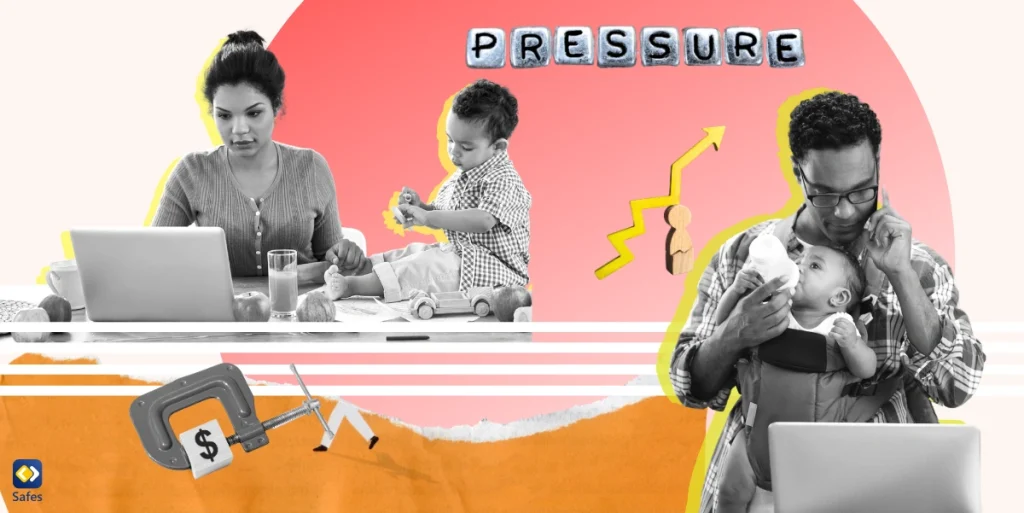School refusal, also known as school avoidance disorder, is a complex issue that affects many children and teenagers. It goes beyond occasional absences and is often driven by underlying factors such as anxiety, social difficulties, academic challenges, and family dynamics. Parents and schools need to know different ways of school refusal intervention. Collaborating in identifying and addressing the root causes of school refusal is crucial to helping your child overcome their challenges and thrive academically and emotionally.
Understanding School Refusal
School refusal is more than just occasional absences; it is a persistent pattern of avoiding school due to emotional distress. It is crucial to distinguish it from playing hooky or truancy, as school refusal is driven by an aversion to the school itself rather than a desire for leisure activities. Children who experience school refusal often exhibit problematic patterns such as excessive distress associated with attending school, resistance to going to school, and interference with their daily lives and their family’s routines.
Common Causes of School Refusal
School refusal can have various underlying causes, and understanding these factors is essential for effective intervention. Some common causes include:
Anxiety: Social anxiety disorder and generalized anxiety disorder can contribute to school refusal. Children may experience overwhelming fear and worry about school, making it difficult for them to attend.
Social Factors: Bullying, peer conflicts, and difficulties in forming relationships with classmates can lead to school refusal. Children may feel unsafe or rejected in the school environment, causing them to avoid attending.
Academic Challenges: Learning difficulties, academic pressure, and feeling overwhelmed by schoolwork can contribute to school refusal. A child may fear failure or struggle to keep up with their peers, leading them to avoid school altogether.
Family Dynamics: Family issues can impact a child’s willingness to attend school; these may include:
- Conflicts at home
- Significant life changes
- Lack of support
Unresolved family problems can create anxiety and stress, making school attendance difficult.

Collaboration between Parents and Schools
Addressing school refusal requires a collaborative approach between parents and schools. Working together, they can better understand a child’s specific challenges and develop tailored interventions. Open communication, empathy, and shared responsibility support a child’s journey back to regular school attendance.
Strategies for Parents
As a parent, there are several strategies you can implement to support your child who refuses to go to school:
1. Open and Empathetic Communication
Have non-judgmental conversations with your child to understand their concerns and fears regarding school. Create a safe space for them to express their emotions and actively listen to their thoughts and experiences. Validate their feelings and let them know that you are there to support them.
2. Identify and Address Underlying Issues
Work with your child’s school to identify any underlying issues contributing to their school refusal. You may need to meet with school staff to gain insights into your child’s experiences at school. Addressing issues, such as bullying or academic difficulties, can help alleviate their anxiety and increase their willingness to attend school.
3. Establish a Predictable Routine
Create a structured and predictable routine around school attendance to provide your child with a sense of stability and security. Make consistent morning and evening routines, including set wake-up and bedtime schedules. This strategy can help reduce anxiety associated with school-related transitions and create a sense of normalcy.
4. Gradual Exposure to School
If your child is experiencing severe anxiety about attending school, consider a gradual exposure approach to help them ease back into regular attendance. Start by visiting the school outside of regular hours, such as on weekends, to familiarize them with the environment. Gradually increase their exposure by attending school for short periods, slowly building up to full days.
5. Seek Professional Support
If your child’s school refusal persists or intensifies, it may be beneficial to seek professional support from a therapist or counselor specializing in child and adolescent mental health. These professionals can provide additional strategies and interventions based on your child’s needs.

Strategies for Schools
Schools play a crucial role in addressing school refusal and supporting students who struggle to attend regularly. Here are some strategies that schools can implement:
1. Create a Supportive Environment
Make an inclusive and supportive school environment that builds a sense of belonging for all students.
- Promote positive peer relationships
- Address bullying promptly
- Provide opportunities for students to connect with trusted adults within the school community
2. Individualized Support Plans
Develop individualized support plans for students experiencing school refusal. Collaborate with the student, parents, and relevant professionals to identify specific triggers and develop strategies to address them. It may involve modifications to the student’s academic workload, providing additional support, or implementing accommodations to alleviate anxiety.
3. Strengthen Communication Channels
Establish clear and effective communication channels between school staff, parents, and students. Regularly update parents on their child’s progress and any interventions being implemented. Encourage open dialogue between parents and school staff to ensure a coordinated and supportive approach.
4. Staff Training and Education
Provide ongoing training and education to school staff regarding school refusal and the underlying factors that contribute to it. This can help staff recognize the signs and symptoms of school refusal, respond empathetically, and implement appropriate interventions.
5. Referral to External Resources
You may need to refer students and their families to external resources, such as mental health professionals, to ensure comprehensive support when necessary.
Introducing the Safes Parental Control App
Today, it is essential to address the challenges of online safety and digital well-being. The Safes parental control app can be a valuable tool for you navigating the complexities of parenting in the digital era. With its comprehensive features, Safes empowers you to protect your child from online dangers, manage screen time effectively, and foster healthy digital habits.
By integrating the Safes app into your parenting toolkit, you can enhance your ability to keep your child safe online, allowing you to focus on addressing school refusal and supporting your child’s overall well-being.
Safes is available on all devices and major platforms. You’re welcome to download it from our website. You can also find Safes on Google Play and App Store.
School Refusal Interventions: Conclusion
School refusal is a complex issue that requires collaboration between parents and schools to effectively address the underlying causes and support children in their journey back to regular attendance. By implementing strategies such as open communication, gradual exposure, and individualized support plans, parents and schools can make a significant difference in helping children overcome their anxieties and thrive academically and emotionally.




